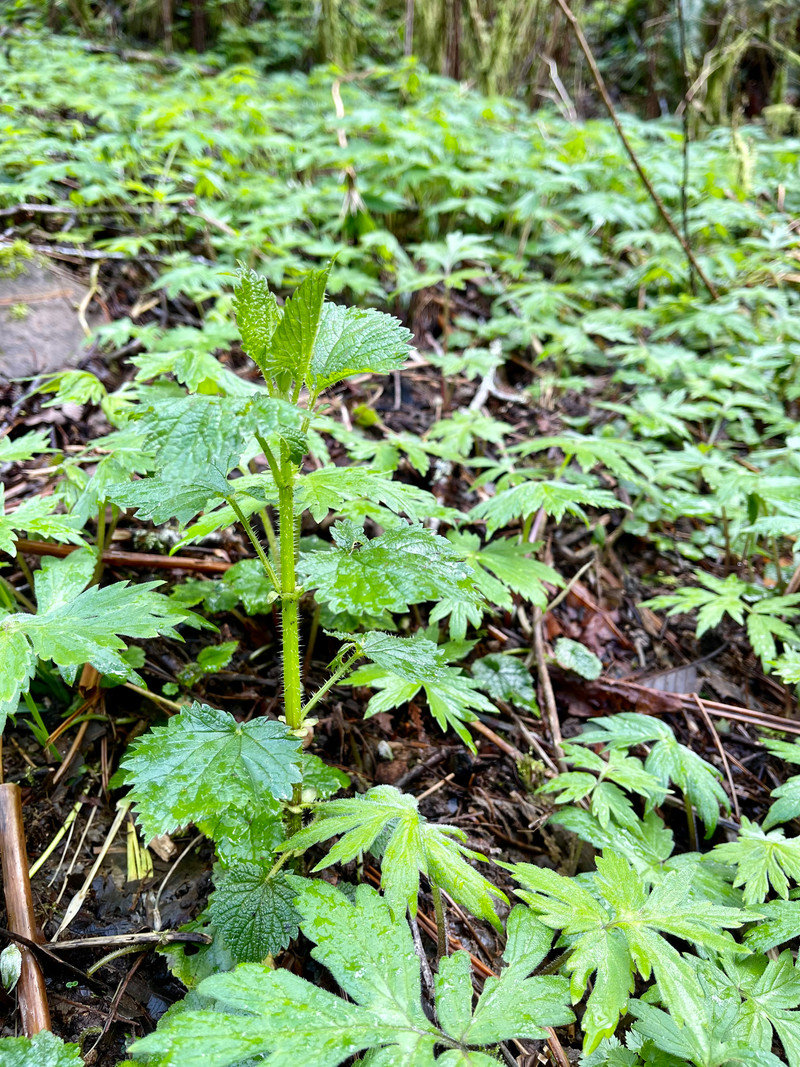The human mind is amazing in it capacity to imagine and invent. In the realm of gardening, many landscape designers imagine & implement designs with a wide array of colors, patterns, and textures - using a palette of thousands of plants from around the globe. While this can be exciting, it's far from natural, and often create gardens that require additional time, money, and resources to maintain.
None us have to look far, however, to remember the first and last landscape designer - Nature herself. She paints pictures in the clouds, carries seeds in the wind, and organizes a most-elegant place-based collaboration of plants over the canvas of the Earth. But she does it slowly, patiently, allowing each plant to evolve into the conditions of a place, evolve with the people that call that place home. The resiliency of her design relies upon an intricate dance of relationships between elements and living beings. She doesn't have to load on the fertilizer, meticulously weed the rows, or provide extra water during the Summer.
It doesn't take a degree to design your garden like Nature would. But it does take a moment to look closely and see what's really happening around you. It takes patience to listen, to feel, to be curious year after year. New ecosystems don't emerges from a paper plan, they emerge from the fertilizer of our loving footsteps alongside the helping hands of Nature.
The miracle of Nature's design emerges everywhere, even in our own backyards. However, the patterns can be hard to see beneath hundreds of years of urban or suburban landscape manipulation. So, it's always particularly insightful to venture out to see the places were the designs of Nature have been left to their own devices for hundreds of years.
Recently, my partner and I went on a trip to the Oregon Coast. On our way back, we stopped by the Drift Creek Wilderness on a sunny afternoon and took a tour of what Spring was designing on the mountain hillsides:
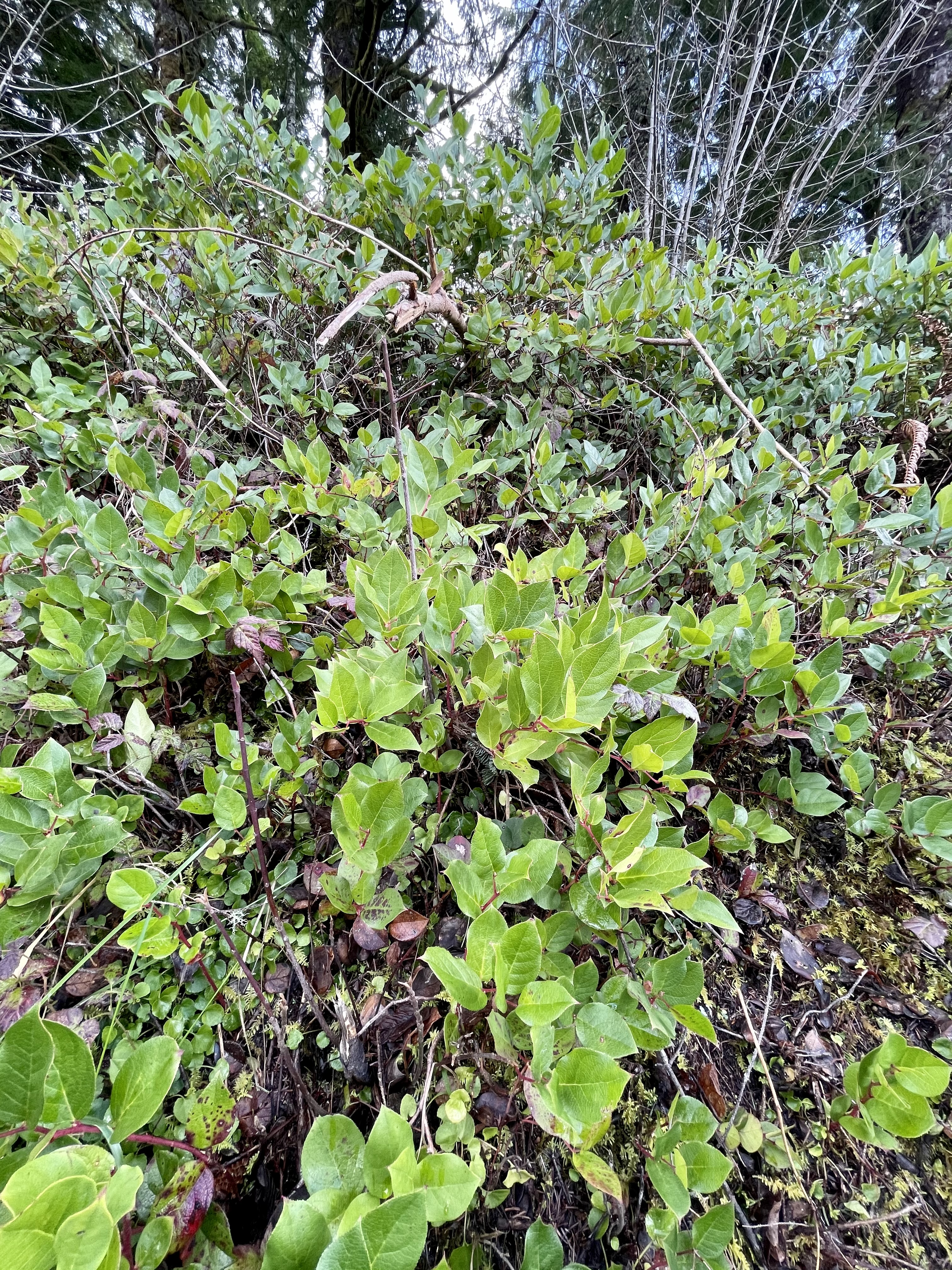

We drove past steep hillsides cascading with Salal Berry plants (upper left). We wandered through meadows of Pacific Waterleaf dappled with newly-emerging Nettle stalks (upper right).
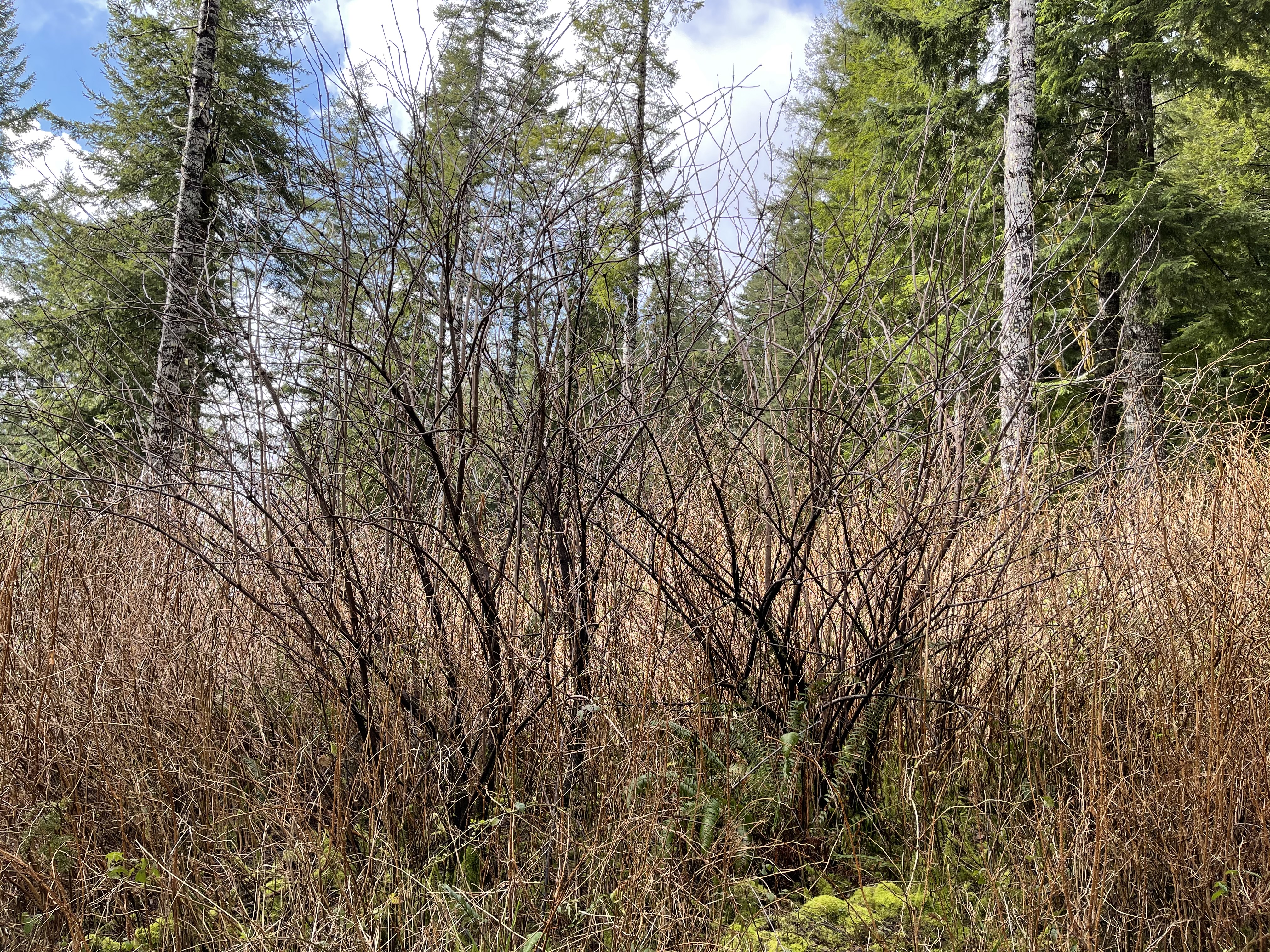
We discovered thick patches of Salmonberry (pinkish stems) giving company to Blue Elderberry trees (dark blue stems) (pictured above). We awed over old growth Evergreen Huckleberries reaching for the light under the tall Fir canopies (below).
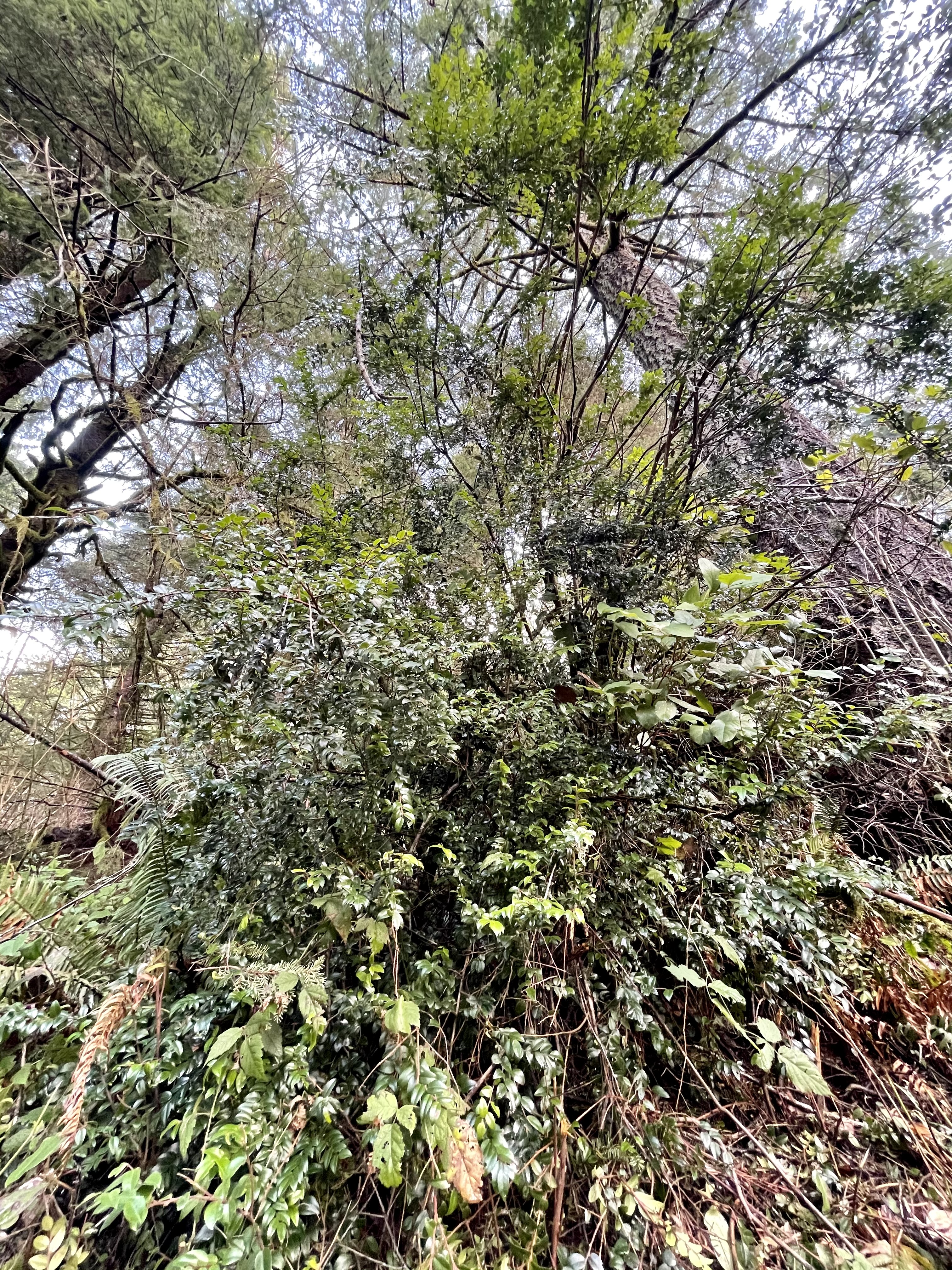
We watched as Red Alders stood watch over mountain views, gently dangling their catkins in the wind.
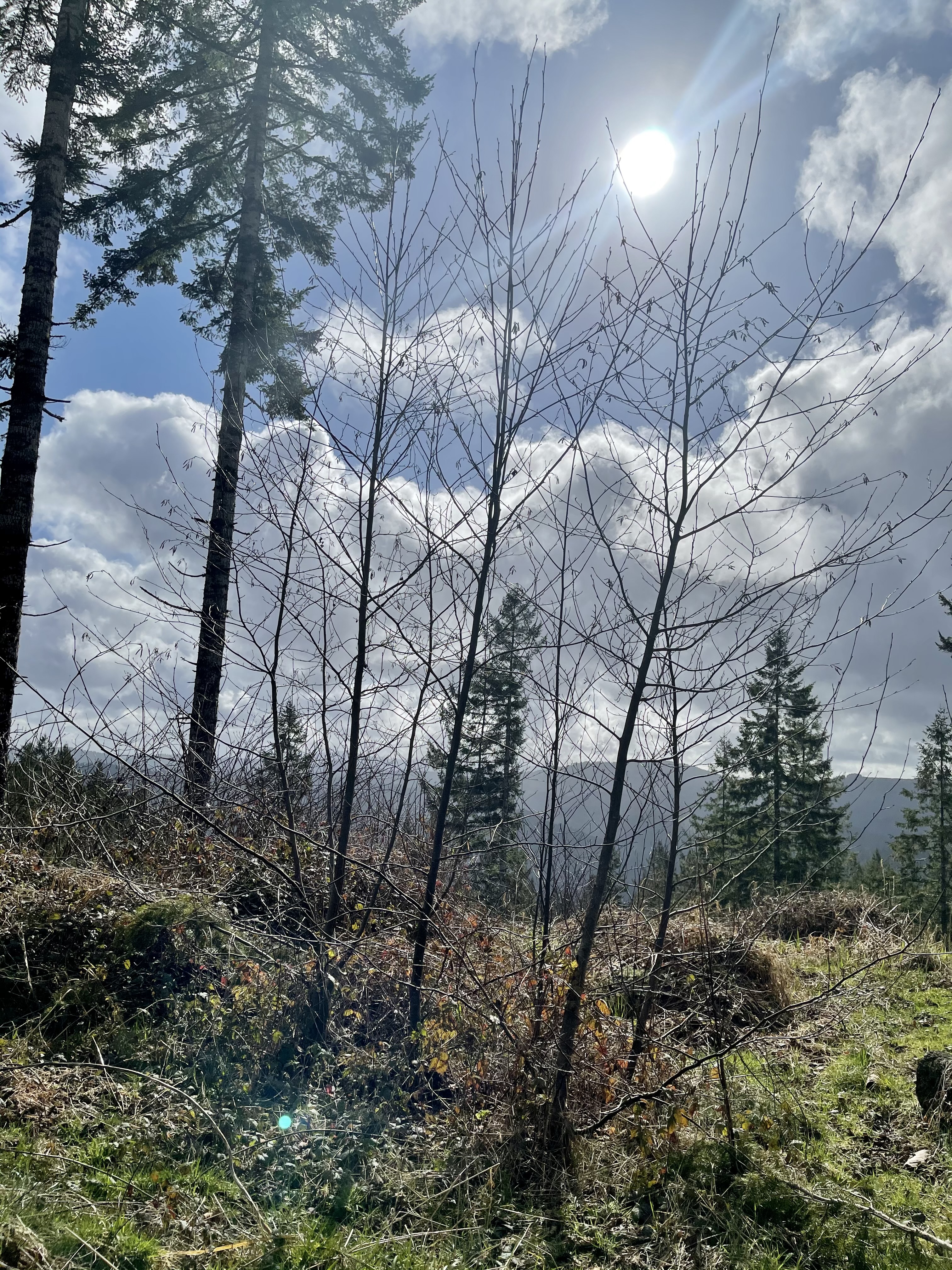
We came to know these plants, and many others, in deeper ways. We came to realize again that gardening by Nature's design requires a humble starting point, based in the bigger truths of Nature: namely interconnection and change.
To garden by Nature, we must understand that any action we take has its origins within the pre-existing and ancient web of relationships of Nature. Likewise, any result we receive is the product of an unimaginable number of causes and conditions, only one of which was our intention. Knowing this, we honor what's already there in our gardens, no matter how small or seemingly useless to us. Likely, most of them have uses. I remember a time I spent an hour removing a "weed" only to find out after the fact it had the perfect medicinal qualities for the health problems I was experiencing.
To garden by Nature, we must understand that the wildness and "messiness" we see in Nature is only the product of a ceaseless reaching towards developing deeper relationship with what's around us. We can learn to love it. Likewise, any isolation of a plant or a garden by weeding or fertilization, or even by placing in a pot, is only a very temporary and artificial act of control. We can learn not to struggle with it.
All things change, including ourselves. Knowing this, we allow the ebb and flow of life and death in our gardens, and trust deeper the wisdom of growing things. We are only visitors here, and when we're in doubt, we can remember that probably Nature knows better.
More practically speaking, gardening by Nature's design means moving slower, asking more questions, remembering your child-like connection to Nature, and experimenting and exploring in lots of non-linear ways. And it means lots of interplanting or companion planting. It means gardening every nook and cranny of your growing space, using them as a palette for facilitating Nature's creation - high and low, side to side, in the house and out in the field. If someone comes along to ask why your sidewalk is sprouting grasses and flowers, well you can tell them your gardening there too!
Just don't forget, of course, to leave some space in the jungle of your yard for you - as you are Nature too.
